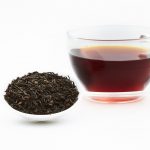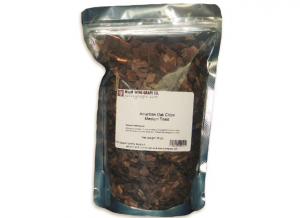Sacrificial tannins 101
Have you heard about sacrificial tannins? If not, read on!
Why we love tannins
As wine drinkers, we love tannins because they help to give structure and mouth feel to a wine. Without it, wines would taste flabby and dull.
As wine makers, we love tannins because they aid in color stabilization, prevent and slow the process of oxidation, and give structure to the wine. Sacrificial tannins can help with this.
Tannins are already present in grapes through their seeds, skins, and stems. We add more tannin through oak aging as well as with oak or tannin alternatives. As fermentation begins, color compounds within the skins bind with proteins, which then drop out of the wine and settle onto the bottom. You can add tannins to white, rose, or red juice.
Tannins gets added as way to give these proteins within the juice extra tannins to bind on to, so that not everything is lost from the juice. This is the role of “sacrificial tannins,” or tannins that you as a a winemaker add in so that you don’t lose any from the grapes themselves.
How do I incorporate sacrificial tannins?
- Use oak chips or oak dust (preferably medium toast) at up to 3 oz per 5 gallons of wine
- FT Rouge for red wines. 5-25g/100 lb fruit. Add at first signs of alcoholic fermentation.
- FT Blanc for white or rose wines. 1-3g/100 lb fruit. Add after it’s been racked off of gross lees.
These can all be added directly to the juice at the onset of fermentation. Just sprinkle it into the juice and incorporate as much as possible, or add to red must right before the first punch down. It will settle to the bottom and can be racked off of at the end of fermentation.
How to Improve Color and Mouthfeel When Making Red Wine
No Wimpy Wines!
How to Improve Color and Mouthfeel when Making Red Wine
A more common complaint amongst home winemakers is that their red wine lacks the depth of color and full body and mouthfeel that they would prefer. Everyone loves a wine that has a heavier mouthfeel, giving the sensation of whole milk or cream on the palette. While it is not always an indicator of quality, many folks associate deeply pigmented red wines with being higher quality. Both color and mouthfeel can be easily managed or enhanced at fermentation through the following factors:
Physical Manipulation:
When selecting the grapes for your batch of wine, it is important to know what kind of wine characteristics that they generate naturally and how that matches up with your personal indicators of quality. If you favor very deeply pigmented wines, perhaps the integration of a very dark grape into your blend will help to boost color, right from the crush. Even a 10% addition of a deeply colored grape such as Petite Verdot, Petite Sirah, or Chambourcin can enhance the overall color of your batch and not detract from the primary varietal’s unique flavor character.
Cold soaking the grapes is another way to physically manipulate the grapes to achieve better color extraction. After crush, grapes can be lightly sulfited, and then allowed to cold soak, provided that they are kept around 40°F. Keeping the must around 40°F is important to inhibit yeast or bacterial growth in the must. There are many ways to keep the grapes this cold, including putting them in a refrigerator, using dry ice, using frozen sanitized jugs of water, or creating a small chilling closet with air conditioning and temporary walls. The extended cold soak will allow the condensed grape skin tannins to leach out and help lock in color by binding to color pigment molecules (anthocyanins). The addition of pectic enzymes during the cold soak will also aid in the color securing process.
Nutrient Additions:
The additions of various supplemental nutrients will affect the color and mouthfeel positively. Booster Rouge and Opti-Red are supplemental nutrients for red wine fermentation that help to increase mid palette mouthfeel and enhance color stability. Opti-Red is high in polysaccharides that will help to lock in color pigments and create a more intense color. Booster Rouge is a yeast derivative nutrient that helps to contribute mid-palette volume and firmer structure to wines. Both of these nutrients also help with creating a smoother tannic profile to red wines.
Tannin Additions:
The addition of tannins at crush to the grape must will help to contribute to the overall mouthfeel of red wines, but more specifically to the mid-palette volume of the wine. Products such as FT Rouge or Oak Dust can be added to the must at the beginning of fermentation to act as sacrificial tannins for the yeast to consume throughout their metabolic process. Rather than have the yeast consume the grape tannins, they will consume the oak tannins, leaving the preferred grape skin tannins. This will help to increase the overall preferred tannin content of the wine, increasing the overall mouthfeel and perceived palette volume. FT Rouge is also very effective at locking in color pigments, working synergistically with the previously listed nutrients.









Recent Comments